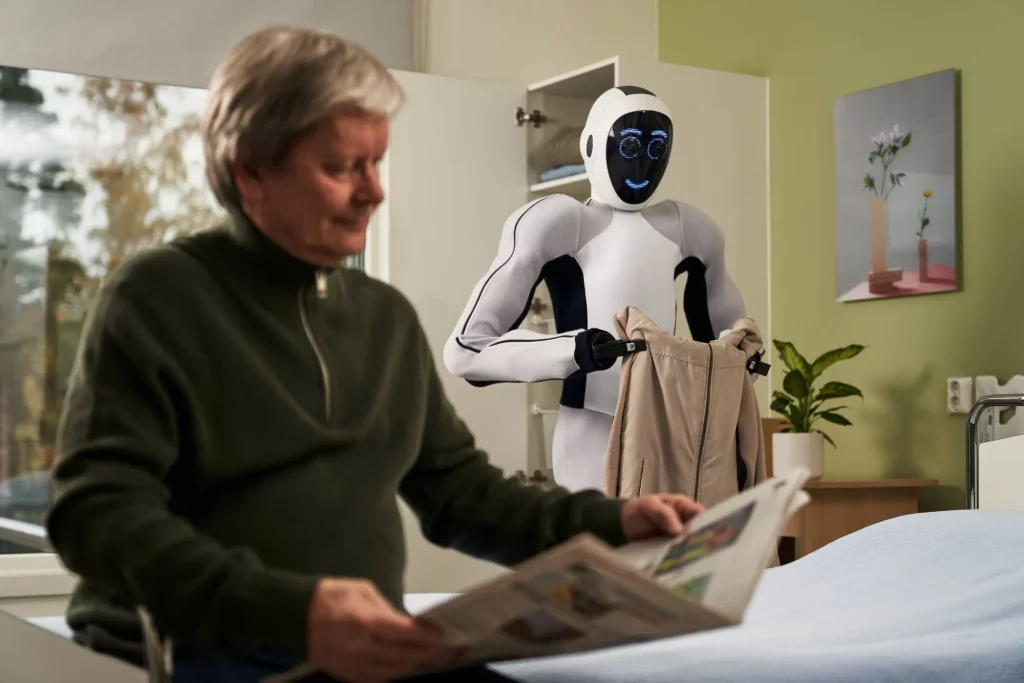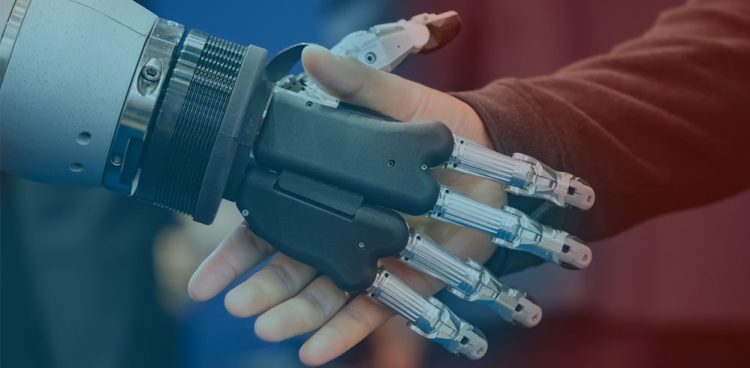Introduction: The Dual Challenge of Progress and Responsibility
The rise of robotics and artificial intelligence (AI) is transforming industries, healthcare, education, and everyday life. From autonomous vehicles to smart home assistants, robots are increasingly becoming part of our daily routine. However, as these technologies advance, the question of safety and ethical decision-making looms large. The ability of robots to interact with the physical world and make decisions without human intervention creates significant risks—risks of unintended harm, biased decision-making, and ethical dilemmas.
While robots are designed to operate autonomously and efficiently, ensuring that they do not cause harm to humans or the environment is one of the most significant challenges we face. This challenge becomes particularly pressing as we look towards the future, where robots will take on even more complex and critical tasks, including medical procedures, disaster response, and military operations.
This article explores the key issues surrounding the prevention of harm by robots, the ethical dilemmas they may present, and the future strategies needed to ensure that robots act in ways that are both safe and ethical.
1. The Importance of Robot Safety and Ethical Decision-Making
1.1. Ensuring Safe Robot Behavior
A major concern with the widespread adoption of autonomous robots is their ability to function safely in real-world environments. Whether it’s a self-driving car navigating busy streets or an industrial robot working alongside humans on a factory floor, robots must make decisions in dynamic environments with constantly changing variables. Their actions could result in unintended consequences if not carefully programmed, leading to accidents, injuries, or damage.
Ensuring robot safety involves the design and implementation of robust safety protocols that account for every possible risk. This includes fail-safe mechanisms, redundancy systems, and thorough testing to simulate real-world scenarios. For example, in the case of autonomous vehicles, rigorous simulations and real-time monitoring are essential to ensure that the vehicle reacts correctly to unexpected obstacles or sudden changes in road conditions.
Moreover, human-robot interaction safety is particularly critical. In collaborative environments, such as factories or hospitals, robots working alongside humans must be programmed to recognize human presence and respond in ways that minimize the risk of physical harm. The introduction of safety sensors, such as force sensors, proximity detectors, and vision systems, allows robots to detect humans and adjust their behavior accordingly.
1.2. Ethical Decision-Making: The Morality of Autonomous Robots
While safety is crucial, robots must also be designed to make ethically sound decisions in situations where human values are involved. This becomes especially relevant in fields like healthcare, where robots might make decisions about patient care, or in military robotics, where the stakes are even higher.
Consider the following example: An autonomous robot working in a healthcare setting may need to decide whether to perform an emergency procedure on a patient. The robot must weigh the risks of the procedure against the benefits and make a decision based on factors such as the patient’s condition, medical history, and possible outcomes. In this scenario, the robot’s decision-making is not just about following rules but also about aligning with moral and ethical principles.
Developing ethical decision-making in robots presents several challenges, particularly in ensuring that their actions are in line with human values and societal norms. The Trolley Problem, a famous ethical dilemma, illustrates the complexities of programming robots to make moral decisions. In its simplest form, the dilemma asks whether a robot should sacrifice one person to save many others, an issue that involves difficult trade-offs between utilitarian principles (the greatest good for the greatest number) and deontological ethics (duty-based principles that emphasize the rights of individuals).
These types of moral decisions require robots to have moral frameworks that can guide them in complex situations. Researchers are working on algorithms that allow robots to make decisions based on ethical reasoning, but creating a universally accepted framework for robot ethics remains a significant challenge.
2. The Risks of Unintended Harm
2.1. Systematic Failures and Malfunctions
The risk of unintended harm is heightened when robots malfunction or operate outside of their programmed parameters. Even with the most advanced technology, there is always the possibility of a systemic failure, which could cause the robot to act in ways that are unsafe or harmful. This is especially true when robots are tasked with high-risk jobs, such as working in hazardous environments or performing medical procedures.
For example, a robotic surgery system might malfunction during a complex procedure, leading to injuries or even fatalities. While the vast majority of robotic systems are designed with extensive redundancy measures to prevent malfunctions, the complexity of modern robots and their reliance on AI and machine learning algorithms introduce new avenues for failure. AI-driven robots may misinterpret data or fail to recognize critical environmental cues, leading to errors in judgment or action.
2.2. Autonomous Decision-Making in Unpredictable Environments
Another significant risk arises when robots must make decisions in unpredictable environments, where they are required to respond to dynamic and unforeseen circumstances. Consider autonomous drones used in search-and-rescue operations, where the drone must navigate through debris to find survivors. The drone may encounter unexpected obstacles, or its sensors might fail to detect a hidden victim, leading to potentially tragic consequences.
The challenge here is that robots can’t always foresee every potential variable or predict how real-world events will unfold. This unpredictability can result in misjudgments or poor decision-making, especially when the robot must act under pressure or in emergency scenarios.

3. Solutions for Ensuring Robot Safety and Ethical Behavior
3.1. Designing Safe and Ethical Algorithms
Ensuring that robots behave in a safe and ethical manner requires the development of advanced algorithms that can handle complex decision-making processes. This includes constraint-based programming, where robots are given clear guidelines for safe operation, and ethics-driven AI, which uses ethical frameworks to guide decision-making.
Machine learning algorithms can help robots adapt their behavior in real time based on feedback from their environment. For instance, if a robot detects an obstacle or an unexpected human presence, it can adjust its actions in ways that minimize harm. Likewise, AI can be trained to make ethical decisions by learning from past scenarios or by integrating ethical theories (e.g., utilitarianism, virtue ethics) into its decision-making process.
Some experts advocate for the inclusion of human oversight in critical decision-making processes. This could involve developing systems where robots can ask for human input in situations that are too complex or morally ambiguous. Such “human-in-the-loop” systems would allow robots to defer to human judgment when necessary, ensuring that ethical and safety concerns are addressed.
3.2. Rigorous Testing and Simulation
Before robots are deployed in real-world environments, they must undergo rigorous testing and simulation to ensure that they can safely interact with humans and their surroundings. For example, autonomous vehicles are subjected to extensive driving simulations, where they must respond to various traffic scenarios and hazards. These tests not only help evaluate the robot’s capabilities but also identify potential risks that could lead to harm.
Testing robots for safety and ethics requires simulating complex environments that mirror real-world conditions. This includes not just physical scenarios, but also emotional and social situations, especially when robots are interacting with humans. By using AI to simulate these situations, developers can identify ethical issues, predict potential malfunctions, and improve robot design before deployment.
3.3. Setting Ethical Standards and Regulations
As robots become increasingly integrated into everyday life, it is essential to establish ethical standards and regulations to govern their use. Governments and international bodies must work together to create laws and frameworks that ensure robots are developed and used responsibly. This could involve regulations around the use of robots in sensitive sectors like healthcare, law enforcement, and military operations.
One potential solution is the development of a universal robot ethics framework, which would set guidelines for how robots should behave in various scenarios. Such a framework would not only outline rules for preventing harm but also address how robots should make ethical decisions in real-world contexts. Developing these standards is complex, as it requires balancing technological innovation with public safety, privacy concerns, and moral considerations.
4. Conclusion: Navigating the Future of Autonomous Robots
As robots become more advanced and integrated into society, the challenges of preventing harm and ensuring ethical decision-making will only intensify. With robots taking on increasingly complex roles—from healthcare and transportation to defense and emergency response—ensuring their safe and ethical behavior is critical.
By focusing on safe design principles, ethical algorithms, and rigorous testing, we can minimize the risks associated with robots and empower them to make decisions that align with human values. Moreover, the development of universal standards and regulations will be necessary to guide the evolution of robotics in a responsible and ethically sound direction.
Ultimately, robots have the potential to benefit society in countless ways, but only if they are developed with careful consideration of their safety and ethical implications. The road ahead will require collaboration among technologists, ethicists, policymakers, and the public to ensure that autonomous robots serve humanity’s best interests while minimizing harm.











































